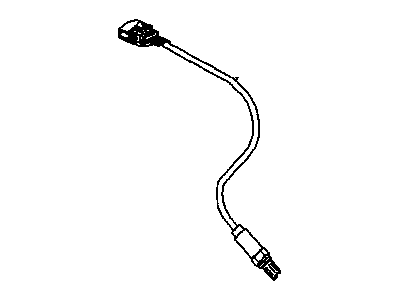
My Garage
My Account
Cart
Genuine Saturn LS Oxygen Sensor
Oxygen O2 Sensor- Select Vehicle by Model
- Select Vehicle by VIN
Select Vehicle by Model
orMake
Model
Year
Select Vehicle by VIN
For the most accurate results, select vehicle by your VIN (Vehicle Identification Number).
4 Oxygen Sensors found
Saturn LS Sensor,Heated Oxygen
Part Number: 24450850$127.55 MSRP: $239.04You Save: $111.49 (47%)Ships in 1-2 Business Days
Saturn LS Oxygen Sensor
The Oxygen Sensor in Saturn LS vehicles help to determine how much unburned oxygen is spilled out by the exhaust system so as to help to control the air-fuel mixture and thereby reduce on emissions. It produces voltage in proportion to the amount of oxygen present and the engine control computer is able to regulate the timing of the fuel injector. In new Saturn LS models, sensors usually installed are zirconium dioxide sensors that may have both narrow band which provide switching back and forth between rich and lean and wide band that have a broader range. Saturn LS vehicles over the years have used the normal oxygen sensors and air/fuel ratio sensors with the latter gotten through output current in place of voltage. The first one is the simplicity of their construction and the second is the type of air-fuel mixtures that they are capable of evaluating. In any case, a damaged Oxygen Sensor can result into high emissions and low fuel efficiency thus underscores its functionality in contributing to efficiency of car engines.
Each OEM Saturn LS Oxygen Sensor we offer is competitively priced and comes with the assurance of the manufacturer's warranty for the part. Furthermore, we guarantee the speedy delivery of your orders right to your doorstep. Our hassle-free return policy is also in place for your peace of mind.
Saturn LS Oxygen Sensor Parts Questions & Experts Answers
- Q: How does an oxygen sensor function in relation to the Powertrain Control Module (PCM) and catalytic converter performance on Saturn LS?A:An oxygen sensor functions as a galvanic battery that generates a small voltage output based on the oxygen levels in exhaust gases, providing essential input for the feedback loop with the Powertrain Control Module (PCM) to maintain the ideal air/fuel ratio of 14.7:1 for optimal Catalytic Converter performance. Vehicles equipped with On-Board Diagnostics II (OBD-II) utilize two oxygen sensors-one before and one after the catalytic converter-to assess converter efficiency by comparing oxygen levels in the exhaust gases. Four-cylinder models feature one upstream and one downstream heated oxygen sensor, while V6 models have four heated sensors, with two for each cylinder head and multiple catalysts. All sensors are heated to improve warm-up time, and care must be taken during servicing to avoid damaging the permanently attached pigtail and electrical connector, keeping contaminants away, and ensuring proper installation of the silicone boot. When replacing an oxygen sensor, it is advisable to warm the engine to ease removal, disconnect the electrical connectors, and use an oxygen sensor socket for unscrewing. Anti-seize compound should be applied to the threads of old sensors, while new sensors come pre-coated. Installation follows the reverse order of removal, ensuring proper torque is applied.











